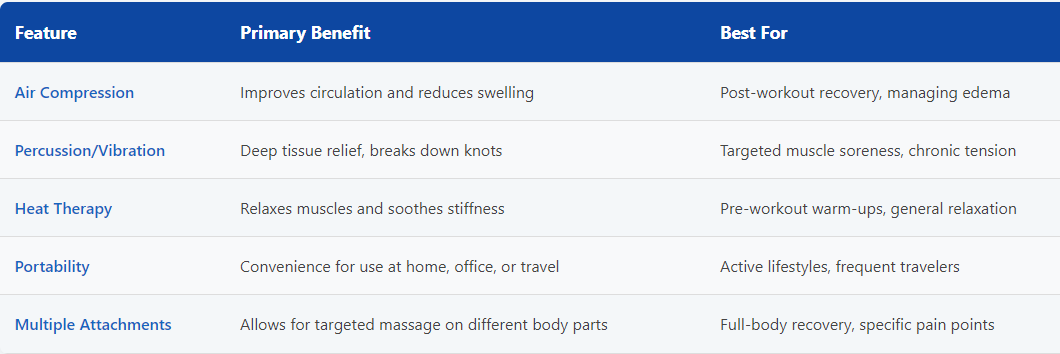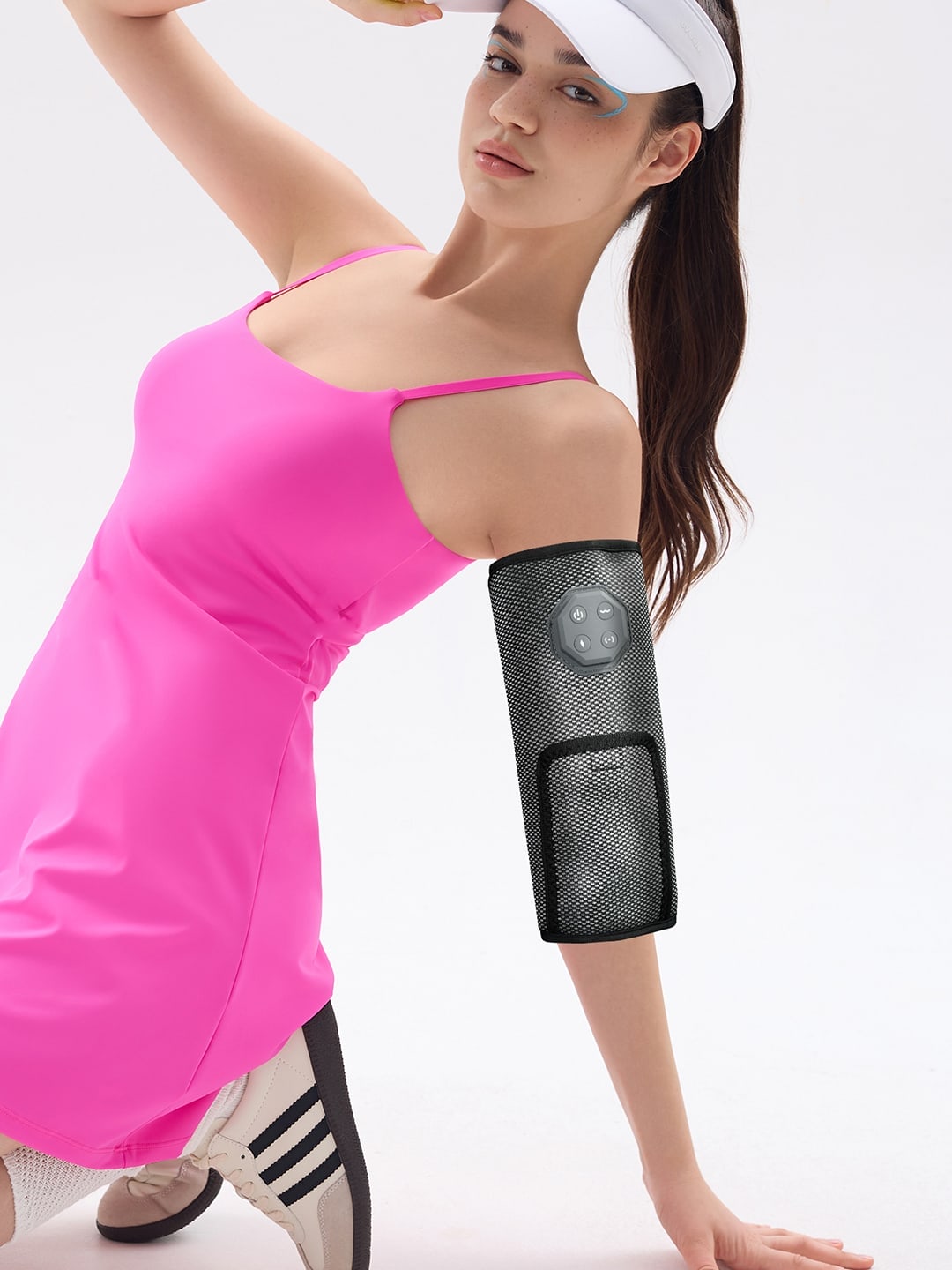forearm (Leg) Massager: Relief for Melbourne Athletes?
- By Tony
- Updated on
In the bustling heart of Melbourne, where active lifestyles and demanding schedules are the norm, the quest for effective muscle recovery and pain relief is constant. Enter the home forearm and leg massager, a device promising professional-level results from the comfort of your own home. But does this blend of air pressure, heating, and vibration truly deliver on its ambitious claims, or is it merely a sophisticated gadget offering a fleeting sensation? We delve into the differing perspectives to help you decide if this is a worthy investment for your well-being.
The Promise: Immediate, Professional-Level Relief at Home
The central proposition of these advanced forearm leg massagers is compelling: to provide immediate, professional-level muscle relief, potentially even replacing the need for expensive and time-consuming visits to a physical therapist. This ambitious goal speaks to a desire for accessible, efficient, and effective solutions for everyday aches and pains, as well as for the more serious athlete or individual managing chronic discomfort. The technology often incorporates multiple modes, including air compression, therapeutic heating, and targeted vibration, often coupled with red light therapy, aiming to address muscle soreness, stiffness, and promote circulation.

Let's listen to what these people have to say.
The Promise: Immediate, Professional-Level Relief at Home
The central proposition of these advanced forearm leg massagers is compelling: to provide immediate, professional-level muscle relief, potentially even replacing the need for expensive and time-consuming visits to a physical therapist. This ambitious goal speaks to a desire for accessible, efficient, and effective solutions for everyday aches and pains, as well as for the more serious athlete or individual managing chronic discomfort. The technology often incorporates multiple modes, including air compression, therapeutic heating, and targeted vibration, often coupled with red light therapy, aiming to address muscle soreness, stiffness, and promote circulation.
Perspective 1: The Fitzroy Fitness Junkie's View
For the dedicated fitness enthusiast in Melbourne, often found in the vibrant precincts of Fitzroy, this type of forearm leg massager is viewed as an indispensable recovery tool. "For those of us who take our training seriously," one such individual explains, "this is a top-tier recovery tool. It genuinely helps with muscle soreness after intense workouts, significantly improves flexibility, and ultimately, lets us train harder and more consistently. The portability and the range of different attachments available are a big plus, allowing for targeted relief on various muscle groups." This perspective highlights the device's efficacy in enhancing athletic performance and facilitating a more rigorous training regimen through advanced leg compressions and targeted massage action.
Perspective 2: The Skeptical Consumer from St Kilda
However, not everyone in Melbourne is immediately convinced. From the more discerning consumer, perhaps residing in areas like St Kilda, a healthy dose of skepticism remains. "Some of us are a bit wary about how effective a home massage device can truly be compared to seeing a qualified professional," admits one resident. "I'd be concerned about its long-term durability and whether it can really get to the deep tissue for chronic pain, or if it just provides surface-level comfort. We've all seen gadgets that promise the moon and deliver little more than a pleasant buzzing sensation." This viewpoint raises valid questions about the depth of treatment and the longevity of such devices, contrasting them with the comprehensive care provided by healthcare professionals.
Perspective 3: A Melbourne Physio's Professional Opinion
Seeking a professional viewpoint, we consulted a local physiotherapist. Their take offers a balanced perspective, acknowledging the benefits while tempering expectations. "Physical therapists would acknowledge that percussion therapy, and indeed targeted compression and heat, can be beneficial for muscle relaxation and improving blood flow," they stated. "However, we'd emphasize that these devices are a helpful tool, an adjunct to care, not a replacement for a professional diagnosis and treatment of complex musculoskeletal issues. We'd also caution people to use them correctly to avoid any potential hforearm or exacerbating existing conditions." This professional insight underscores the importance of understanding the device's limitations and using it responsibly as part of a broader approach to health and recovery.
Maximizing Your Home Recovery
When integrating a home massager into your routine, especially focusing on a leg stretching machine or general leg massage, understanding proper usage is vital. Here are some key considerations:
- Start Slow: Begin with the lowest intensity and gradually increase as your muscles adapt.
- Target Correctly: Learn to identify the muscle belly and avoid direct pressure on bones, joints, or nerves.
- Stay Relaxed: Ensure the muscle group being massaged is in a relaxed state for maximum effectiveness.
- Listen to Your Body: Do not push through sharp pain. Discomfort is different from pain; stop if you feel the latter.
- Stay Consistent: Regular, short sessions are often more beneficial than infrequent, long ones.
Choosing the Right Device for Your Needs
The market offers a variety of forearm leg massagers, each with unique features. Some focus on deep tissue percussion, mimicking the thumbs of a therapist, while others prioritize gentle air compression for relaxation and improved circulation. When considering a device for leg stretching machine functionality or general compression legs recovery, look for models that offer adjustable intensity levels and targeted pressure points. Understanding your specific needs—whether for intense athletic recovery, chronic pain management, or simple relaxation—will guide you toward the most suitable option.
The discerning Melbournian understands that true value lies in efficacy and durability. Investing in a reputable brand that prioritizes quality materials and robust engineering is paramount. While the initial cost might seem significant, consider the long-term savings compared to ongoing professional treatments. Furthermore, devices that are quiet, easy to operate, and come with comprehensive warranties offer a greater sense of security and user satisfaction. A truly effective tool will seamlessly integrate into your lifestyle, providing reliable relief when you need it most.

Conclusion: A Powerful Tool, Used Wisely
Ultimately, the forearm and Leg massager can be a powerful tool for professional relief at home, but it is not a panacea. For the dedicated fitness enthusiast, it's an excellent way to optimize recovery. For those with chronic issues, it serves as a valuable supplement to professional medical advice. By understanding its capabilities and limitations, Melbournians can harness this technology to achieve significant muscle relaxation, improved circulation, and enhanced well-being.
Frequently Asked Questions
How to massage your forearm yourself?
You can massage your forearm yourself using your hands or a dedicated forearm massager. For manual massage, use your free hand to apply gentle to firm pressure in circular motions or long strokes along the muscle fibers. For a home massager, position it on the desired forearm muscle group and let the device work. Focus on areas of tension and move slowly.
How to use massage gun on forearms?
When using a massage gun on forearms, start with the lowest speed setting and a less intense head attachment. Gently glide the gun over the muscle belly, avoiding direct pressure on bones or nerves. Spend no more than 1-2 minutes per muscle group. Listen to your body and adjust intensity or pressure as needed. Always ensure your forearm is relaxed during the session.
Where to put forearms during massage?
When using an forearm leg massager or receiving a massage, your forearms should typically be relaxed and supported. For handheld massagers or self-massage, place your forearm on a stable surface like a table or your lap. If the massager has sleeves, ensure your forearm is comfortably inserted. The goal is to allow the muscles to relax, so avoid tensing up or holding your forearm in an awkward position.




